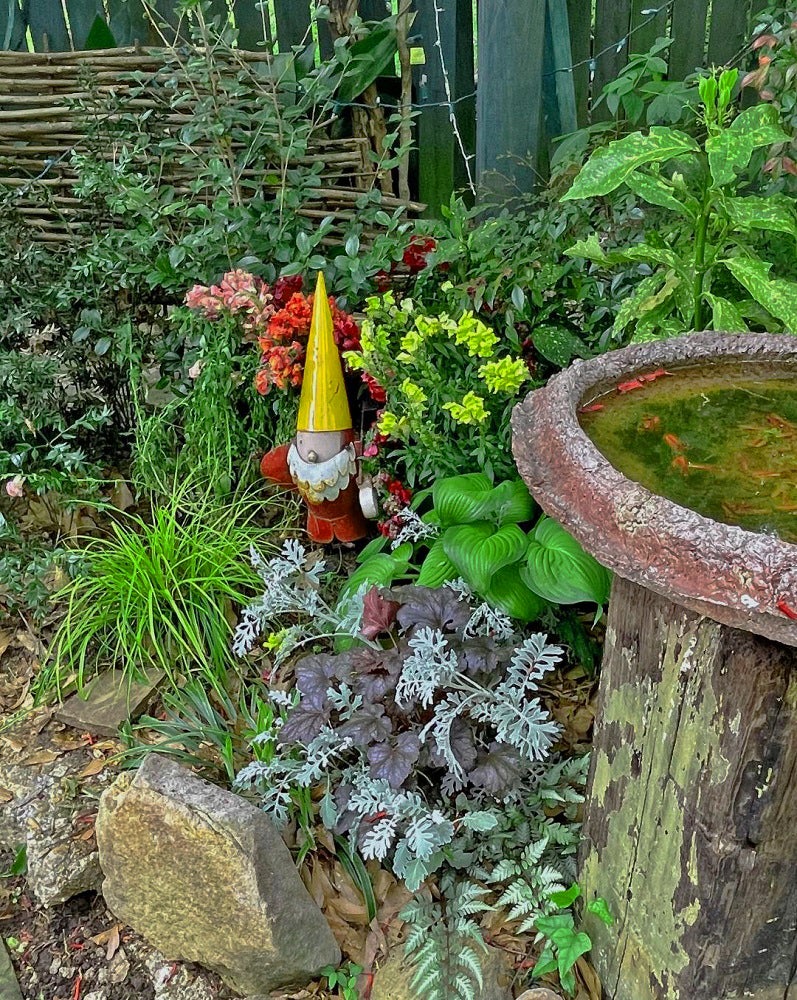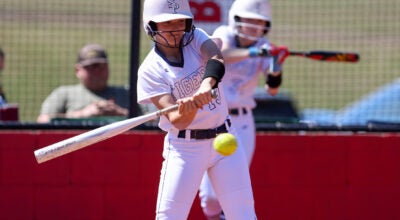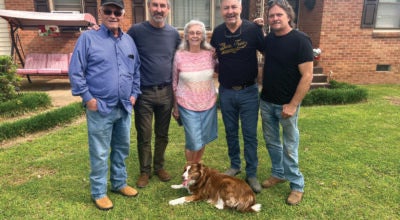With container plantings it’s the concept, not the recipe
Published 10:20 am Wednesday, April 20, 2022
By Felder Rushing
When it comes to designing a garden beds, or big container plantings, I was raised thinking it’s okay to mix and match complementary things for a uniquely personal overall effect that pleases me.
As kids we were encouraged to be creative when making snow people during rare winter storms. No spare carrot for a nose like those in cartoons, so I made do with other items for a similar effect.
But my earliest memorable experience with combining diverse elements into unique creations was with the first toy ever advertised on TV, a box of plastic arms, feet, and facial parts to be stuck into a potato. I moved on to arranging my plate of food at family buffets, during which nobody criticized me if my mashed potato volcano was garnished with a green bean or two and the mac n’ cheese got stained with colorful beet juice. Or if I had two kinds of meat side by side. And I could put all the vanilla wafers I wanted around my banana pudding.
So, when my amazing MSU floral design professor Ralph Null, after going over the most basic “line, mass, and filler” elements of simple arrangements, had us make our first enlightened vaseful of wildflowers, grasses, and whatever else we could scavenge in fields and along roadsides, I was ready.
Knowing how lots of folks are daunted by professional terminology, I interpret line, mass, and filler into “spikey, roundy, and frilly.” Some teachers use the “thriller, filler, and spiller” metaphor. The basic idea is to mix different shapes and sizes, usually with visually-heavy items down low, then lightly fill the spaces. And in containers, include something that cascades over the sides.
Try this with your hand and fingers: Make a basket, like you are holding a tennis ball up in the air, without the ball. Then make a tight fist, then a peace sign. Bend your wrist and point your fingers towards the ground. You got the four basic shapes. Now find plants or other materials with those four shapes, put them all together in a flower vase or flower bed or container, and viola! You are a designer.
Thanks to Sir Null, I also came to appreciate that not everyone, given similar materials, would likely assemble the same potato-face creature, flower bed, or whatnot. In fact, the most successful would go out and find interesting alternatives to the same old, same old.
See, it’s the concept, rather than the recipe. Need something linear? Substitute for tall flowers anything long and narrow, including ornamental grasses or a group of bare branches, spray-painted whatever color I need. Instead of a clumpy round shrub, go with a large urn, birdbath, bench, or even a group of bowling balls on short metal rebar stems. Add anything with small flowers or leaves, including ferns, makes a good filler.
So when I recently created a small English cottage-style corner of my Mississippi garden, I started with a heavy home-made birdbath and some “chimney pots” backed with a woven “wattle” fence (made from traditional crape myrtle trimmings, for you “crape murder” haters); in between I placed small shrubs with different shapes, flowers, and colored leaves that will perform all year; then tucked in dramatically-contrasting flowering and foliage annuals and perennials to create seasonal interest. For my “thriller” I added a whimsical gnome, but coulda used a gazing globe or granny’s concrete chicken.
Is it perfect? Nope. Make me smile? Yep. Would you do it? Maybe, maybe not. But could you do something similar, in sun or shade, beds or pots, or flower vase? Go for it.
Felder Rushing is a Mississippi author, columnist, and host of the “Gestalt Gardener” on MPB Think Radio. Email gardening questions to rushingfelder@yahoo.com.






